A recent survey shows 63.4 million U.S. households have a dog, and according to the Insurance Information Institute, dog owners spend more than $1,000 annually on routine expenses alone. Add in emergencies or other health issues, and the cost rises dramatically. This excludes one-time expenses such as equipment, training and, of course, the cost of the dog.
In general, larger dogs incur higher costs for food and kenneling than their smaller counterparts. Long-haired dogs tend to have higher grooming costs, though some breeds require frequent trimming. While all dogs benefit from training (and all dogs should know basic commands), with some breeds, training is essential to harmonious living.
Dogs from shelters and rescues tend to be the least expensive, while puppies with AKC Champion bloodlines tend to fetch top dollar. Like anything else, changing trends affect the prices of purebred dogs and prospective buyers need to do their research, both on the breed and the breeder.
Responsible breeders screen their dogs for genetic health conditions and offer information about the breed, and routine care and expenses. They may offer dogs for sale, for show or as companions (the latter often comes with a requirement that the dog be neutered). Prices of puppies in the same litter may vary depending on sex, colorings and conformation.
These are the world’s most expensive dog breeds.
Bottom Line: Samoyed
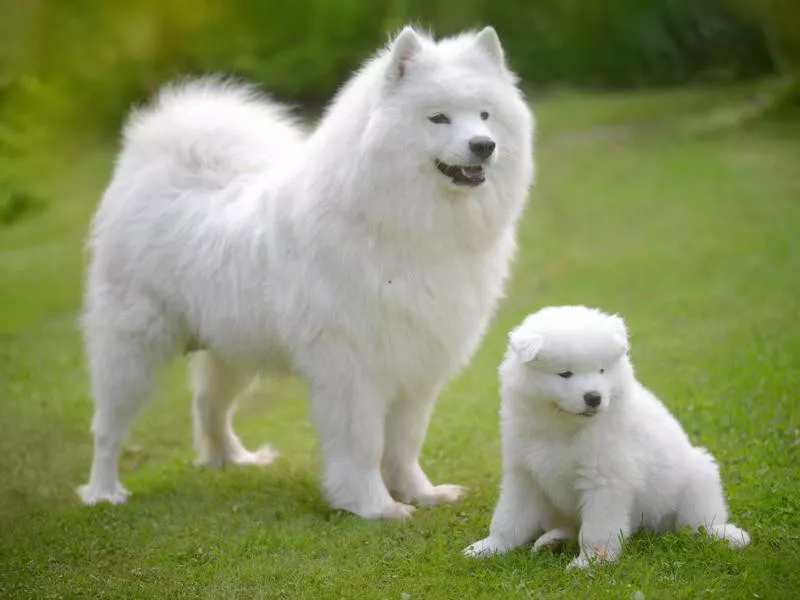
Getty Images
One of the ancient breeds genetically linked to wolves, the Samoyed stands 19 to 24 inches tall and weighs 35 to 65 pounds. The correct pronunciation of the name puts the accent on the last syllable: Sam-a-YED, which comes from the Samoyede, semi-nomadic people from Northern Siberia.
The dogs were first used as reindeer hunters, but as the society shifted to a herding one, the dogs were trained to herd and protect reindeer. They are good at sledding, herding and agility. And they’re happiest when they have a job to do.
This breed is high energy and does not do well with too much idle time. Their intelligence and independence can cause conflicts with their owners. Daily grooming will keep the coat clean between bathing, which should be done at least twice a year.
Bottom Line: Bullmastiff
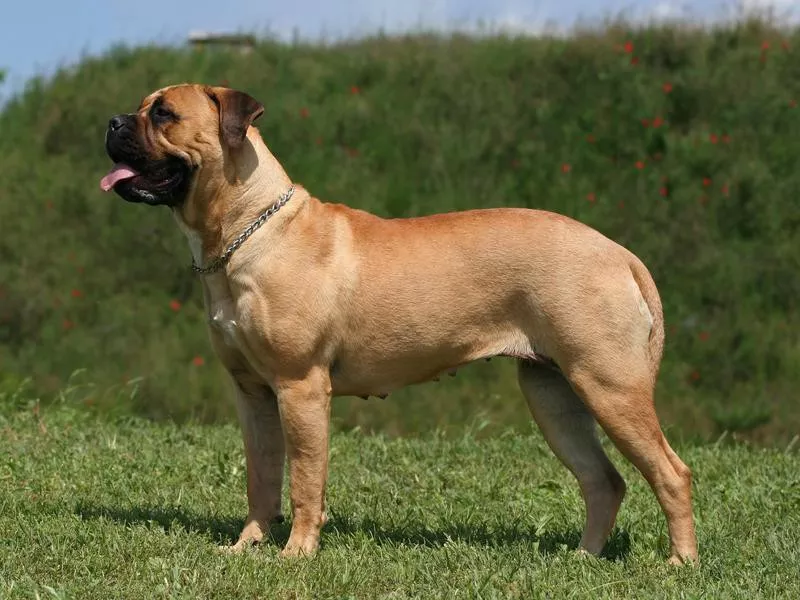
Getty Images
Bred by combining the Old English Bulldog (now extinct) and Mastiff, the breed was originally developed by English landowners to stop poachers. The Bullmastiff’s job was to track intruders and hold them in place (without biting) until a groundskeeper came by.
This dog is calm and loyal and very protective of family. A large dog, standing 24 to 27 inches and weighing 100 to 130 pounds, it looks intimidating, but once it knows its place in the family, it is both a gentle and docile pet, and a fearless protector.
It has a short, dense coat that requires little maintenance. It needs a moderate amount of exercise, and like other large dogs, requires obedience training.
Bottom Line: German Shepherd Dog
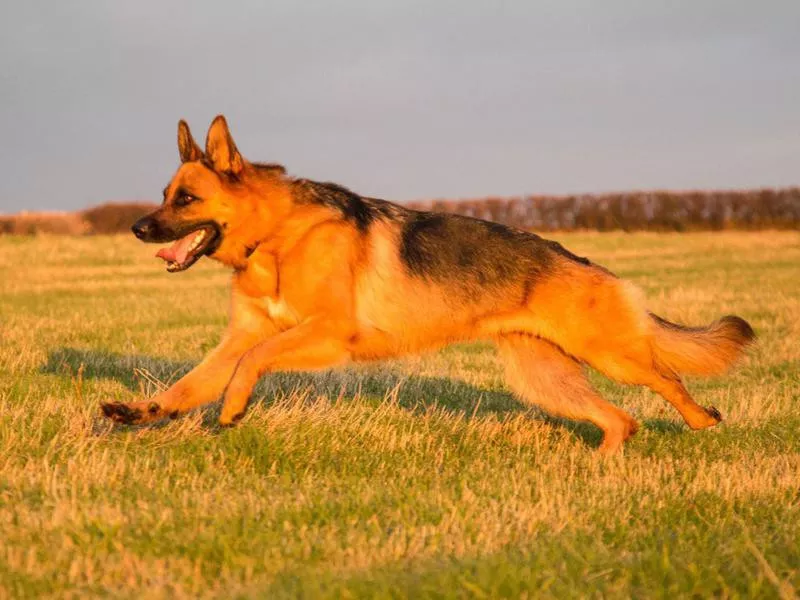
Getty Images
The second most popular dog breed in the U.S., the German Shepherd Dog (yes, “Dog” is part of the breed name) is instantly recognizable. A larger breed, it stands 22 to 26 inches tall, and weighs 50 to 90 pounds. These dogs are active and are happiest when they are challenged, both physically and mentally.
German Shepherd Dogs are descended from farming and herding breeds in Germany, and became popular through tales of German war dogs during World War II and the American television show “Rin-Tin-Tin.”
The breed is a favorite among police and military units for its intelligence and temperament. The dog has a double coat — the exterior is medium length and requires brushing, particularly through the shedding season.
Bottom Line: Dogo Argentino
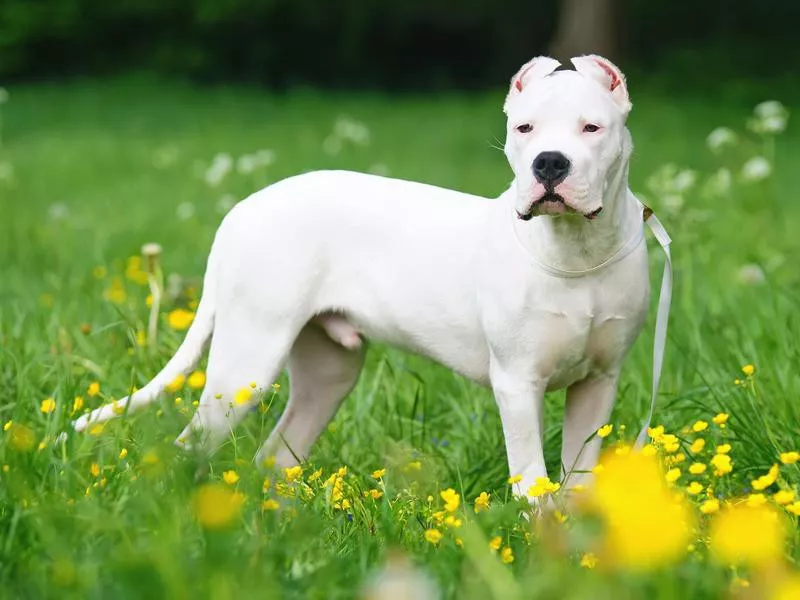
Getty Images
Also known as the Argentinian Mastiff, the Dogo Argentino stands at 24 to 27 inches, and weighs 80 to 100 pounds. It’s a relatively new breed, dating to the 1920s, and it was originally used to hunt big game. It descends from the now-extinct Cordoba Fighting Dog.
It is an intelligent, protective breed with a strong prey drive, and it needs regular exercise. Besides being family dogs, the Dogo has also been trained for search and rescue, police and military work, and as Seeing Eye and service dogs.
It has a short, coarse coat that sheds infrequently.
Bottom Line: French Bulldog
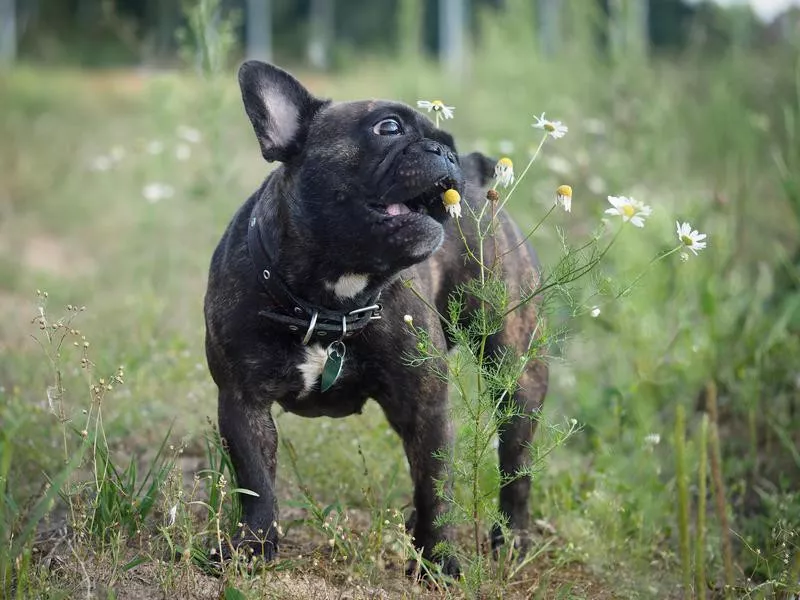
Getty Images
Originally from Nottingham, England, these dogs were favorites of lacemakers in the town who, wanting lap dogs, bred them to be smaller. When the lace industry moved to France, of course, the dogs went with them, and their popularity spread. These dogs stand 11 to 13 inches at the shoulder and weigh less than 28 pounds.
A smooth-coated dog, it doesn’t require much grooming, but reacts poorly to extreme temperature conditions. They do, however, require preventive cleaning of ears, skin folds and anal sacs on a regular basis.
Playful, friendly dogs, the French Bulldog can be trained in obedience and agility, or as a therapy dog.
Bottom Line: Tibetan Mastiff
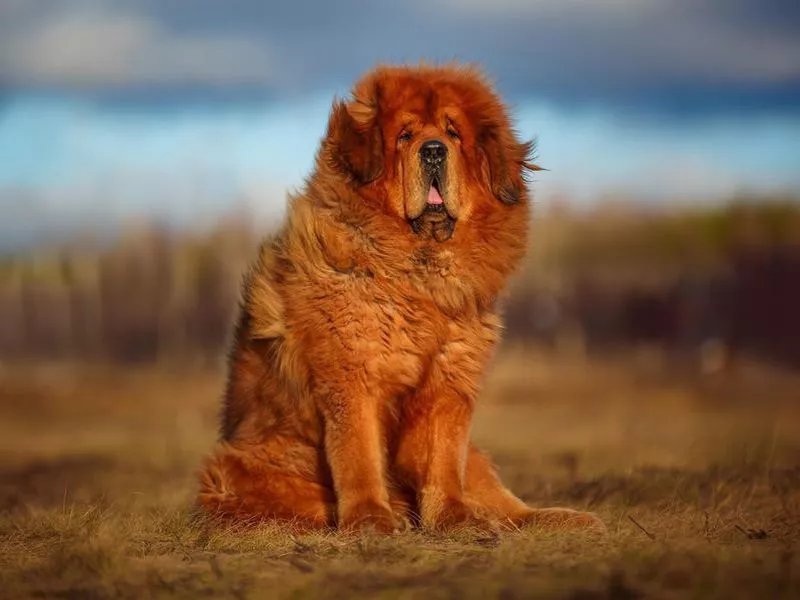
Getty Images
A guard dog from the Himalayas, the Tibetan Mastiff is protective of family and property, and generally aloof around strangers. Highly intelligent, this breed also displays a strong will.
These dogs are 24 to 29 inches tall at the shoulder and are solidly built and strong, weighing from 70 to 150 pounds. They have a double coat. The exterior coast is long and coarse, while the undercoat is soft. (The undercoat sheds considerably in warm weather and will require regular brushing during this time.)
The Tibetan Mastiff needs outdoor space for exercise and is known to roam if not properly contained. While generally quiet indoors, they tend to bark at night if disturbed by external noises. They are surprisingly agile and light-footed, and will appear quickly if they perceive a threat.
Bottom Line: Czechoslovakian Vlcak
The Czechoslovakian Vlcak was bred to work as border patrol in Czechoslovakia in the 1950s. They were bred for harsh environmental conditions, and since they are rather independent, only experienced dog owners should consider the breed.
These dogs are high energy and enjoy spending time outside in active pursuits that also provide mental stimulation, such as tracking or trailing sports. As a more primitive breed, they are intelligent but bore easily. Training is important and needs a different approach than most other breeds. They are otherwise low-maintenance dogs with a weather-resistant coat that sheds twice yearly and fast-growing nails that should be trimmed often.
The breed’s origins were experimental when German Shepherd Dogs and a Carpathian Wolves were bred in 1955. In 1965, breeders began to be more selective to capture the best of both: the hardiness of the wolf and the temperament of the dog. In 1982, the Vlcak was first recognized as its own breed.
Bottom Line: American Staffordshire
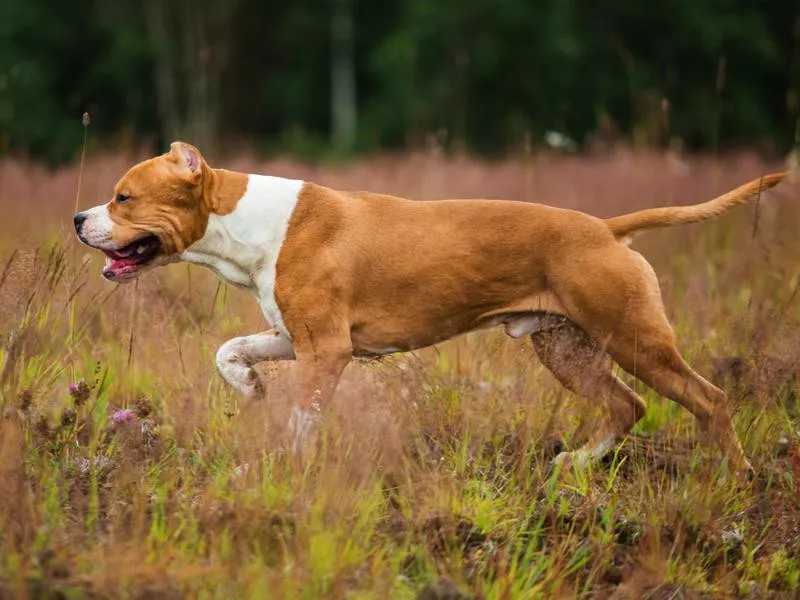
Getty Images
A stocky dog that stands 17 to 19 inches at the shoulder, the American Staffordshire Terrier is a friendly breed that enjoys a challenge, whether it be physical or mental. The short, stiff coat is low maintenance. Just a quick “once over” with a stiff brush weekly will keep it healthy.
This breed requires plenty of exercise in the form of frequent play sessions with their owners. They are happy to be given a job such as participants in canine sports or as search and rescue dogs. These are strong-willed and possess considerable physical strength.
Training is important for a harmonious household. They are known chewers and diggers, and may develop dog aggression, so they should not be left alone with other dogs.
There is some debate about the breed’s origin. While it undoubtedly descends from the Bulldog, experts disagree on which terrier breeds are part of its genetic background. Staffordshire Terriers arrived in the U.S. from Britain in the early to mid-1800s, and breeders developed a terrier larger than the British version.
One of the best known American Staffordshires was Petey, of the 1930s “Old Gang” film comedies.
Bottom Line: American Hairless Terrier
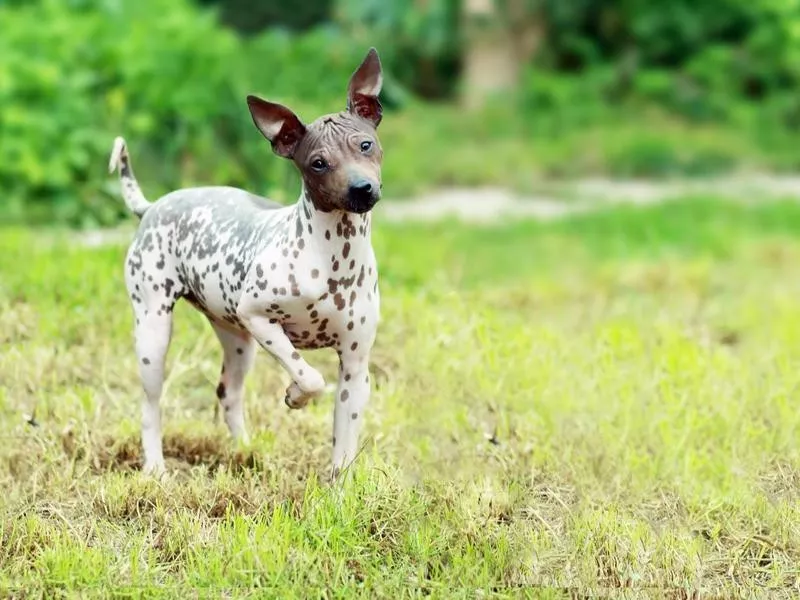
Getty Images
Contrary to its name, the American Hairless Terrier sometimes has hair. The breed comes in two varieties: coated and hairless. The coated has short hair while the hairless has smooth skin and may have eyebrows and whiskers.
While it has the benefit of being low-maintenance as well as allergy-friendly, its lack of coat presents special concerns, such as sunburn and low cold tolerance. The breed is friendly and protective and only needs moderate exercise. These small dogs are easily trained and enjoy canine sports.
The only hairless breed native to the United States, the American Hairless Terrier is related to the Rat Terrier (then known as the Feist), which immigrated with British miners in the late 1800s. In the U.S., they were crossed with the Smooth Fox Terrier.
President Theodore Roosevelt is credited with coming up with the name Rat Terrier. In 1972, the first hairless was born, and by 1983, the American Rat Terrier became its own breed.
Bottom Line: Pharaoh Hound
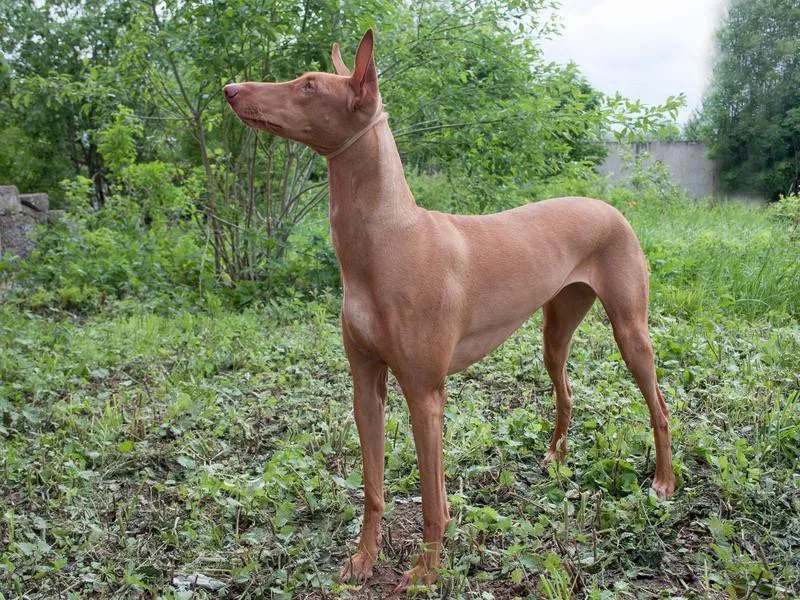
Getty Images
The Pharaoh Hound is a tall, slender dog that’s happiest as a companion animal. Their short coats require little grooming, but regular attention must be paid to their ears, and their nails should be kept short. Regular exercise should include two 15-20 minute running sessions or leashed walks each day.
While they are easy to train and eager to please, they find it difficult, if not impossible, to overcome their instincts and reliably come on command; they should not be trusted off-leash unless in a well-contained area. They enjoy canine sports such as agility and lure coursing, and are good therapy dogs.
Not surprisingly, the Pharaoh Hound originated in ancient Egypt. The Phoenicians brought dogs throughout the ancient world, even to Britain. It is believed they brought the Pharaoh to Malta, where they were used to hunt rabbits. The breed has changed little over thousands of years and they look much the same as they do in reliefs found in ancient Egyptian tombs.
Bottom Line: Azawakh
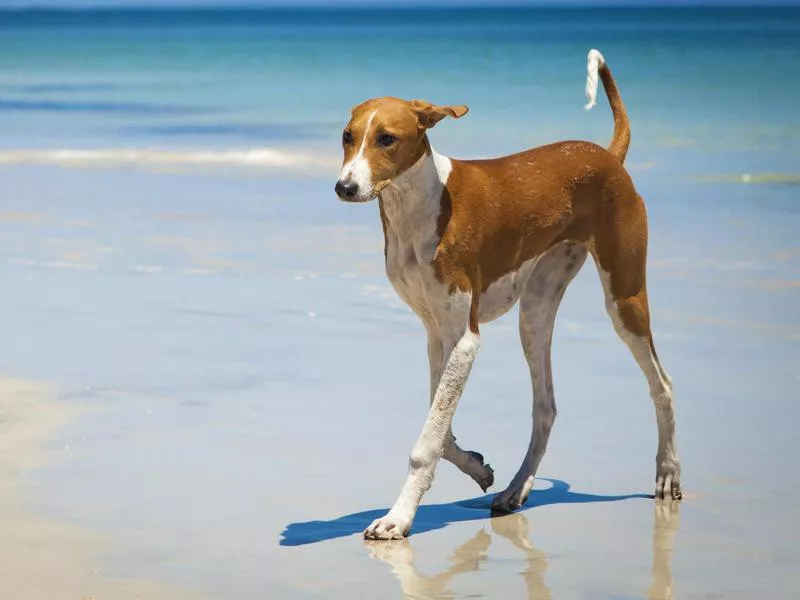
Getty Images
A tall, lean dog, the Azawakh is a sighthound from West Africa. It has a short, smooth coat that needs little maintenance. Unlike most other breeds, the Azawakh can be any color or combination of colors. As would be expected from its athletic physique, this agile breed needs daily exercise and enjoys running, as long as he has company, either human or canine. Like other intelligent breeds, positive training is important.
The breed comes from the south Sahara and the Sahel zone. In the Azawakh Valley, the dogs are known as the “idii n’ illeli,” which means “sighthound of the free people.” There the dogs live closely with their nomadic families and serve as protectors. They are also good hunters that catch hare, antelope and wild boar for their owners.
Bottom Line: Boxer
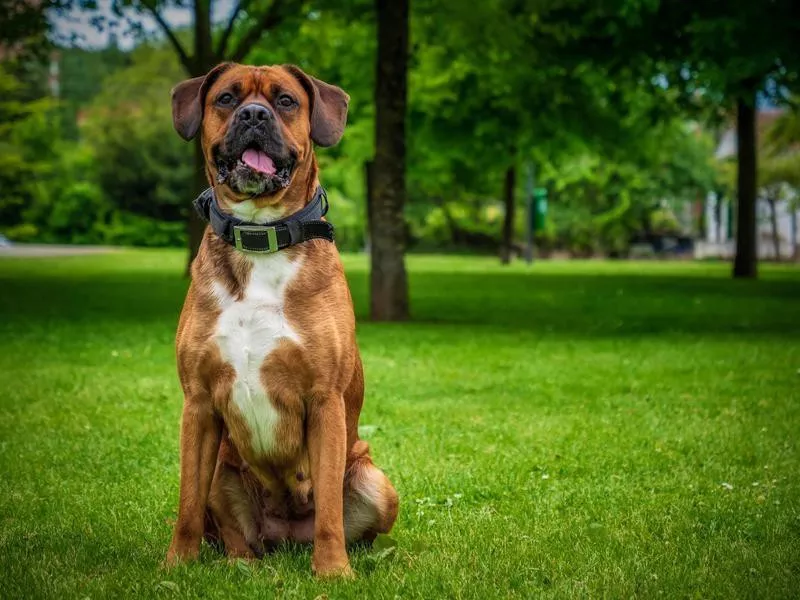
Getty Images
A medium to large breed dog, the Boxer is a gentle, patient dog that makes a great family pet. They are protective and fearless. Although there is disagreement on the origin of the name, they can be seen boxing (or swatting at) other dogs while playing.
Their coat requires little maintenance, and their nails should be trimmed monthly. These dogs have lots of energy and need plenty of daily exercise, on leash or in a fenced yard. They are intelligent and easily bored, so they are happier when they have an activity, such as canine sports or work as a service or therapy dog. Originally bred to chase wild game, the Boxer is a jumper and requires training to keep him from knocking people over.
The breed as we know it goes back to late 1800s Germany, though its ancestors were war dogs of the 2,500 BC Assyrian empire. In medieval times, the Boxer was used in Germany to chase, catch and hold big game such as bear, bison and wild boar. The modern Boxer is the result of breeding this hunting ancestor with a smaller, mastiff-type breed. The breed has been one of America’s top ten since the 1950s.
Bottom Line: Bull Terrier
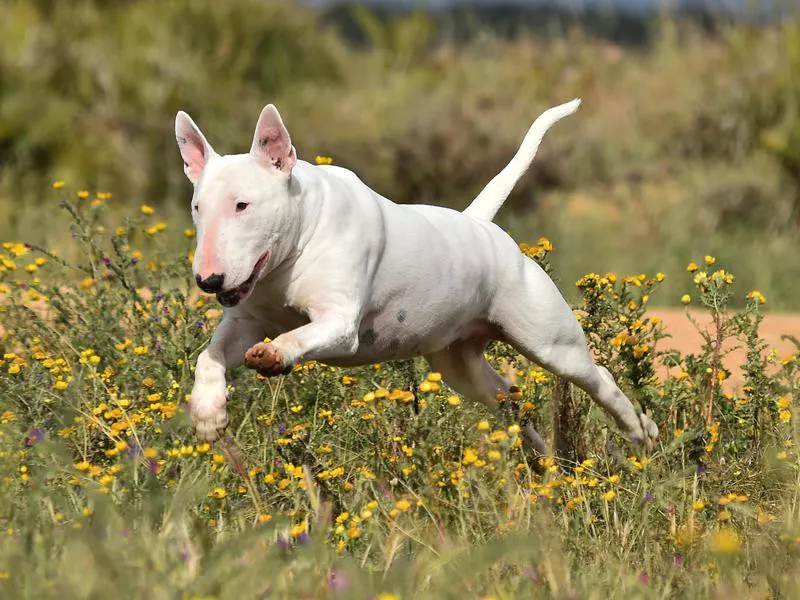
Getty Images
The Bull Terrier is an independent dog that needs regular exercise and mental stimulation. Its short coat requires little maintenance, but its nails should be trimmed often. Easily recognized by its egg-shaped head and pointy ears, these dogs enjoy canine sports, especially those that involve “fun” such as flyball. They are also good at bomb detection and search and rescues, and as service or therapy dogs.
The breed dates back centuries and descends from the Bulldogs used in the sport of bull-baiting in the 1300s. By the 1830s, blood sports were outlawed and fighting dogs went underground, this time against other dogs in indoor pits, often in tavern cellars. Since Bulldogs weren’t quick enough to provide adequate “entertainment,” they were bred with terriers. By the mid-1800s, pit fighting was also illegal and the Bull Terrier became a companion dog, now bred to have a gentle temperament.
Bottom Line: Bouvier des Flandres
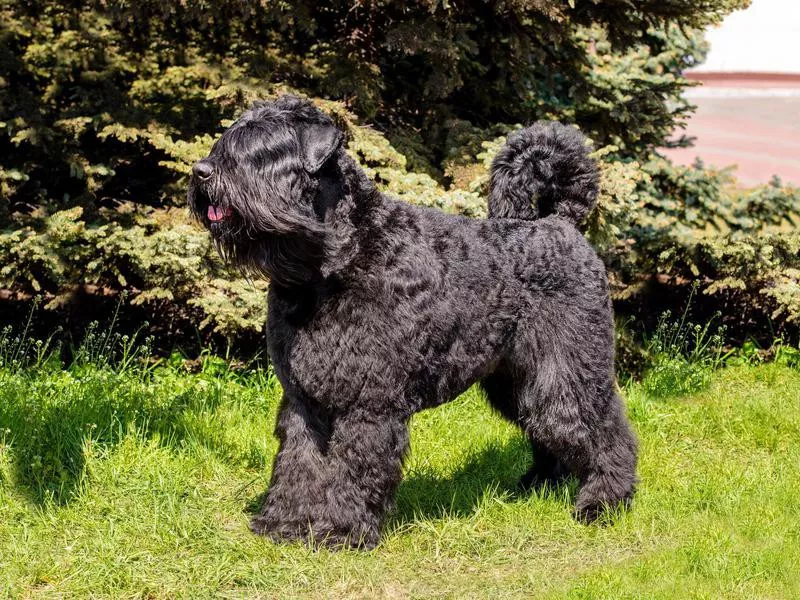
Getty Images
A large, sturdy dog, the Bouvier des Flandres can be as tall as 27.5 inches, and sports a beard and mustache. Bred to be farm dogs, they are good watchdogs and excel at canine sports such as herding trials. The waterproof coats should be brushed, and the nails trimmed once or twice a week.
This breed likes to be busy and can be destructive if it has too much idle time. They need a large fenced area to run and play, preferably not alone. These dogs have a strong prey drive. Early socialization is important. They are eager to please and make good search and rescue dogs.
The name roughly translates “cowherd of Flanders.” The breed dates back to medieval times, when Flanders included the modern-day countries of France, Belgium and The Netherlands. While herding cattle was the breed’s primary purpose, farmers also used the dogs as watchdogs and for pulling carts. When farmlands were destroyed during World War I, the breed was used by the military. After the war, they were common police and Seeing Eye dogs.
Bottom Line: Irish Wolfhound
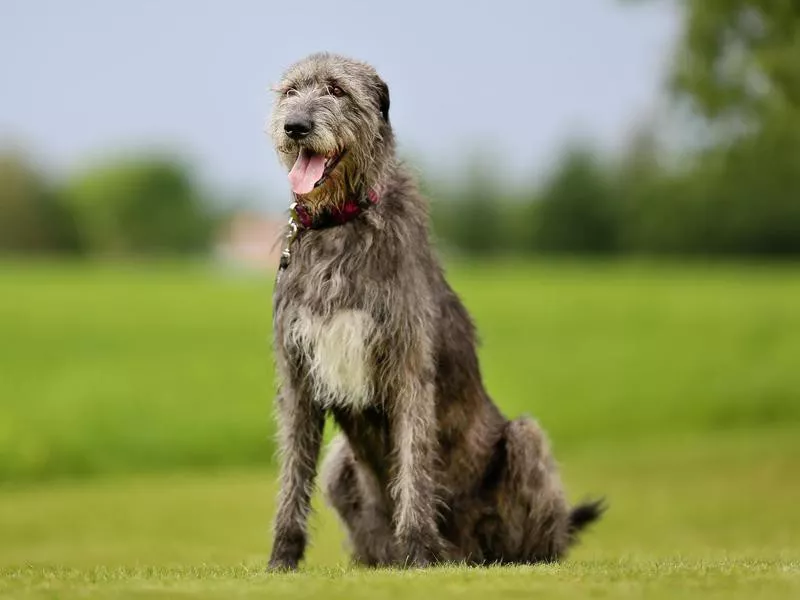
Getty Images
A large dog, the Irish Wolfhound stands up to three feet at the shoulder and weighs up to 180 pounds. Despite their intimidating size, these dogs are gentle, and most are content to hang out on the couch with their family. They make excellent therapy dogs.
They need regular exercise and due to their strong prey drive, should not be allowed off-leash in an unfenced area. They have a double coat that sheds year-round and need weekly brushing. Since they are not fully mature until 18 months old, socialization and training are important to avoid destructive behavior or even possible injury to themselves.
The Irish Wolfhound is one of the oldest known breeds and descends from large British dogs bred with Middle Eastern coursing hounds. Seven of these hounds were gifted to the Roman consul in 391, and in the 15th century, they were used to hunt wolves in Ireland. With the loss of the wolf population in the late 1700s, the breed almost became extinct but was revived in the late 1800s.
Bottom Line: Bedlington Terrier
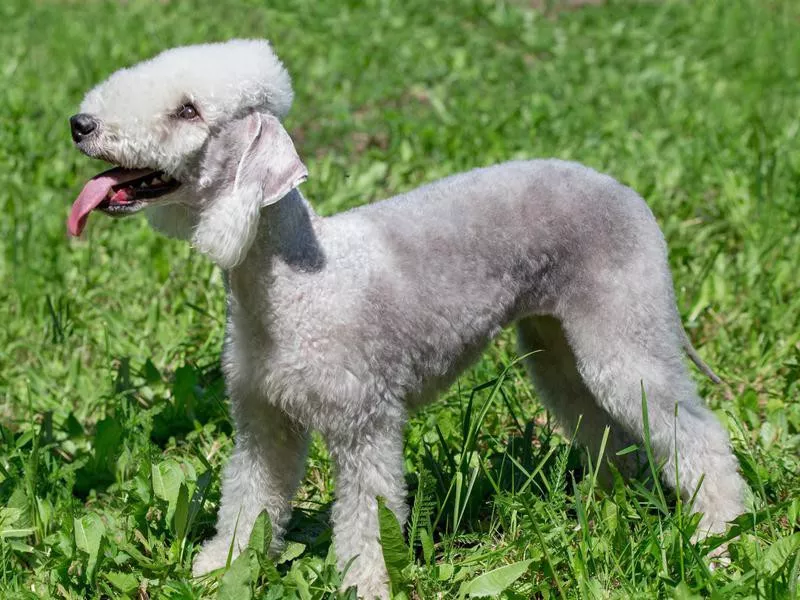
Getty Images
One of the few breeds that do not shed, the Bedlington has rapidly growing hair that needs at least weekly brushing and trimming every other month.
An energetic, friendly dog, it was bred to chase small animals and is speedy when in pursuit. These dogs enjoy being the center of attention and are protective of their family. Like other intelligent dogs, they can be stubborn, so training is important.
The breed is named for the Northumberland mining shire, where they were used to hunt rats and other vermin in the mines, and as pit fighters. (Though they are not aggressive by nature, it is said that “once he started fighting, it was to the death.”) As the dogs left the coalmines, the British elite found the dog lovable and attractive companions.
The town of Bedlington is proud of the breed, even calling its soccer team the Terriers.
Bottom Line: Belgian Malinois
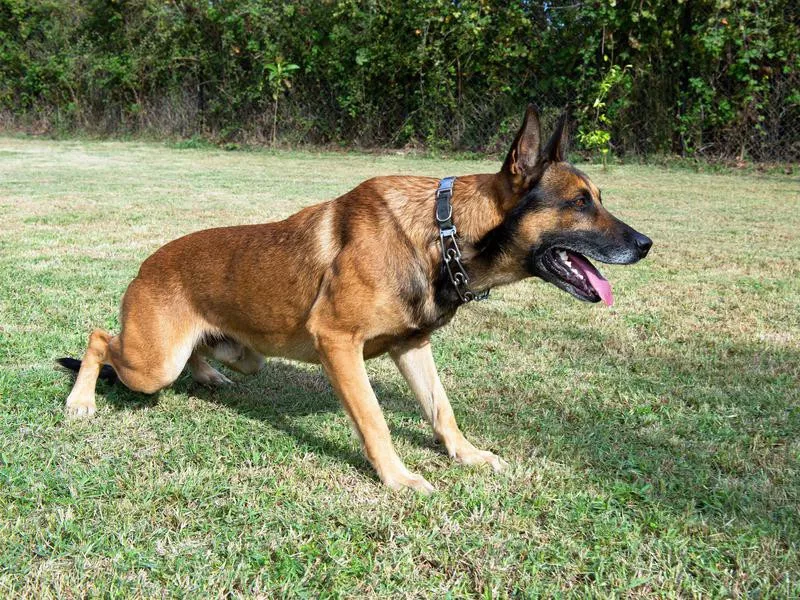
Getty Images
A medium to large breed herding dog, the Malinois is sometimes mistaken for a German Shepherd Dog. These dogs are smart and eager to please, but unhappy without a job and/or a human to spend time with. They need not only frequent exercise, but also activities to stimulate their minds.
They enjoy accompanying their owners while hiking, running and biking, or participating in canine sports. The short coat is easy to care for, only needing frequent brushing during its semi-annual shed. As a herding breed, these dogs have a strong prey drive. Early socialization and training are important.
The breed’s origins are in the Belgian city of Malines. The breed was developed to work with sheepherders and cattlemen. In the U.S., the breed is also recognized as an effective police and military dog. A memorial to military dogs in Fayetteville, N.C. features a life-size bronze statue of a Belgian Malinois.
Cavalier King Charles Spaniel
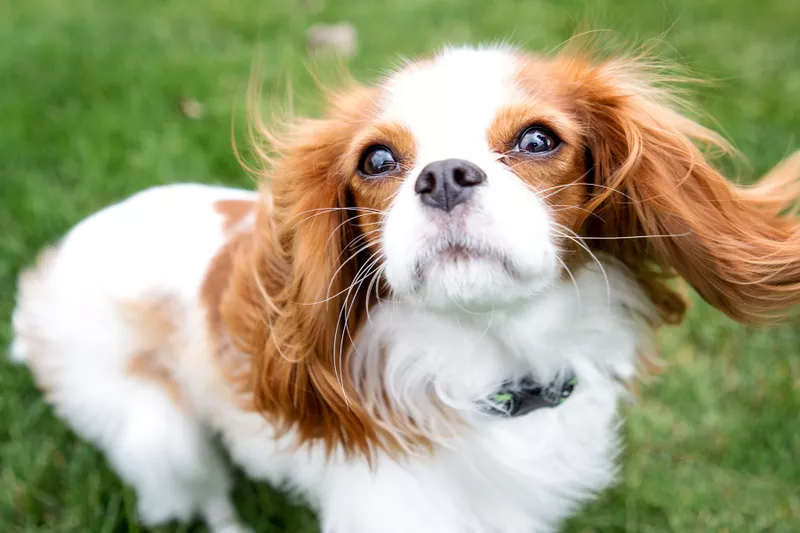
Getty Images
Price range: $2,500+
Common health issues: Hip, patella, eye and cardiac issues
Additional expenses: Fenced yard
The Cavalier King Charles Spaniel is a toy breed, standing only about a foot tall. While its silky coat requires regular brushing and the occasional bath, no other trimming or maintenance is required. Ears should be checked weekly and nails trimmed monthly. Most are content to be lapdogs, but they also enjoy outdoor exercise and some canine sports. These dogs have a good nose and have retained some hunting instincts, so they should not be allowed off leash in the open.
The breed is named for King Charles II of Britain, who is said to have been more interested in breeding spaniels than ruling his country. During the 19th century, Asian toy breed was introduced to the breed, producing a dog with a domed skull and flatter face. This style of King Charles Spaniel became the more popular one, but in the 1920s, a wealthy American encouraged breeders to revive the old style, which became known as Cavalier King Charles Spaniel. (Cavalier references the monarchist party of the civil war that resulted in Charles’ demise.)
Bottom Line: Cavalier King Charles Spaniel
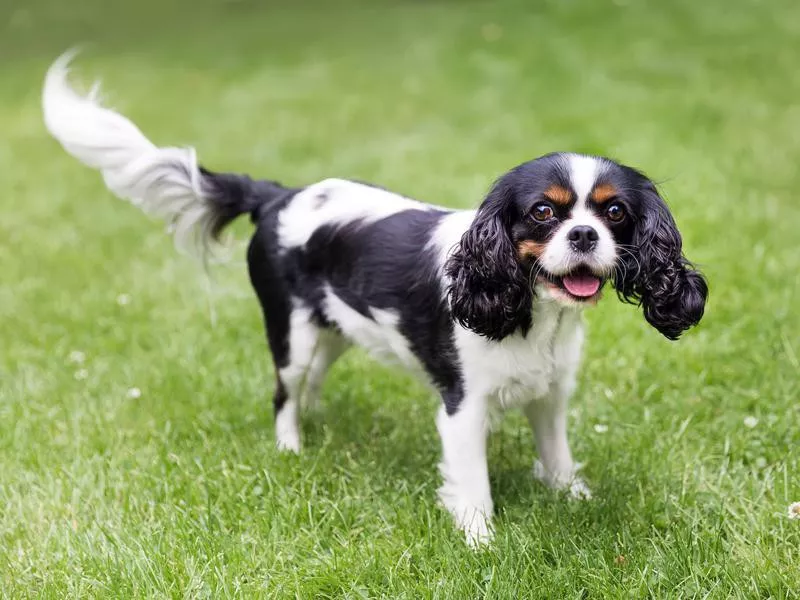
Getty Images
The Cavalier King Charles Spaniel is a toy breed, standing only about a foot tall. While its silky coat requires regular brushing and the occasional bath, no other trimming or maintenance is required. Ears should be checked weekly and nails trimmed monthly.
Most are content to be lapdogs, but they also enjoy outdoor exercise and some canine sports. These dogs have a good nose and have retained some hunting instincts, so they should not be allowed off a leash in the open.
The breed is named for King Charles II of Britain, who is said to have been more interested in breeding spaniels than ruling his country. During the 19th century, an Asian toy breed was introduced to the breed, producing a dog with a domed skull and flatter face.
This style of King Charles Spaniel became the more popular one, but in the 1920s, a wealthy American encouraged breeders to revive the old style, which became known as Cavalier King Charles Spaniel. (Cavalier references the monarchist party of the civil war that resulted in Charles’ demise.)
Bottom Line: Löwchen
German for “Little Lion,” the Löwchen dates back to the 16th century. A small dog, it requires regular grooming and enjoys spending time with its human companions. Alert dogs, they react quickly to unexpected sounds and movements. Positive reinforcement should be used from an early age to teach them that excessive barking is not welcome.
Though there is ample evidence of the breed in artwork throughout the world, its exact origin is uncertain. Some say it comes from Northern Europe and is possibly related to the modern-day poodle. Others say it originated in the Mediterranean and is more closely related to the Bichon breeds of that area. In addition to being charming companions, these dogs were likely expected to hunt small rodents and serve as protectors.
Folklore around the breed establishes them as favorites at court, where ladies used them as living hot water bottles. One dog, in particular, Bijou was known for his devotion to his master, jumping out a 60-foot-high window rather than be left behind. His portrait still hangs in the baroness’s bedroom in Weilburg Castle in Germany.
Bottom Line: Rottweiler
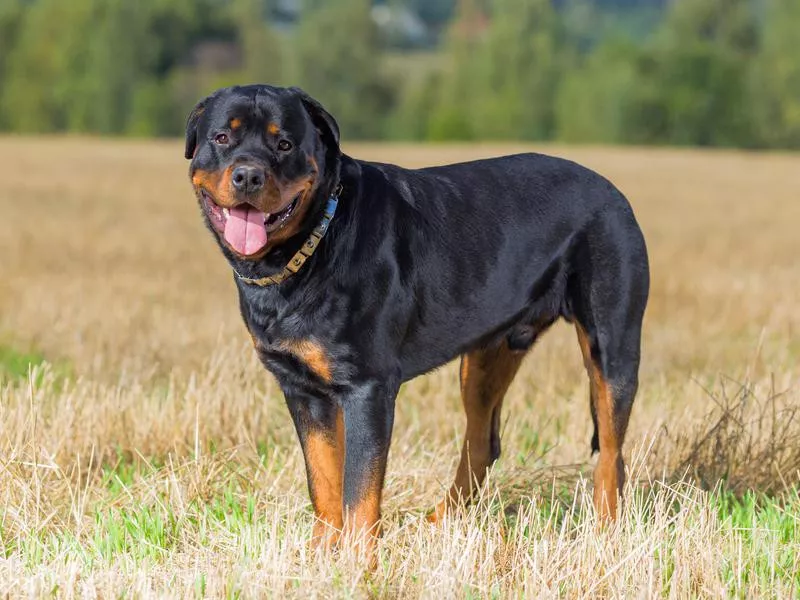
Getty Images
A stocky, medium-to-tall dog, the Rottweiler is friendly, gentle and aloof, but once it settles into a family, can also be goofy (many refuse to accept the fact they’re not lapdogs). They have a coarse outer coat with an undercoat on the neck and thighs. These dogs should be brushed weekly and bathed regularly.
Athletic dogs, they need daily exercise and enjoy walking and swimming. As far as canine sports go, they are adept at herding and tracking. Since they are strong dogs and may show territorial instincts, early socialization and training are important.
The breed descends from Asian mastiff breeds, which the conquering Romans bred with other dogs. After the collapse of the Roman Empire, their dogs were trained and bred to herd livestock and pull carts to market in Rottweil, where they were dubbed Rottweiler Metzgerhund (Butcher’s Dog of Rottweil).
When they were no longer needed in that capacity, Rottweilers were trained as police dogs, Seeing Eye dogs and, more recently, search and rescue dogs.